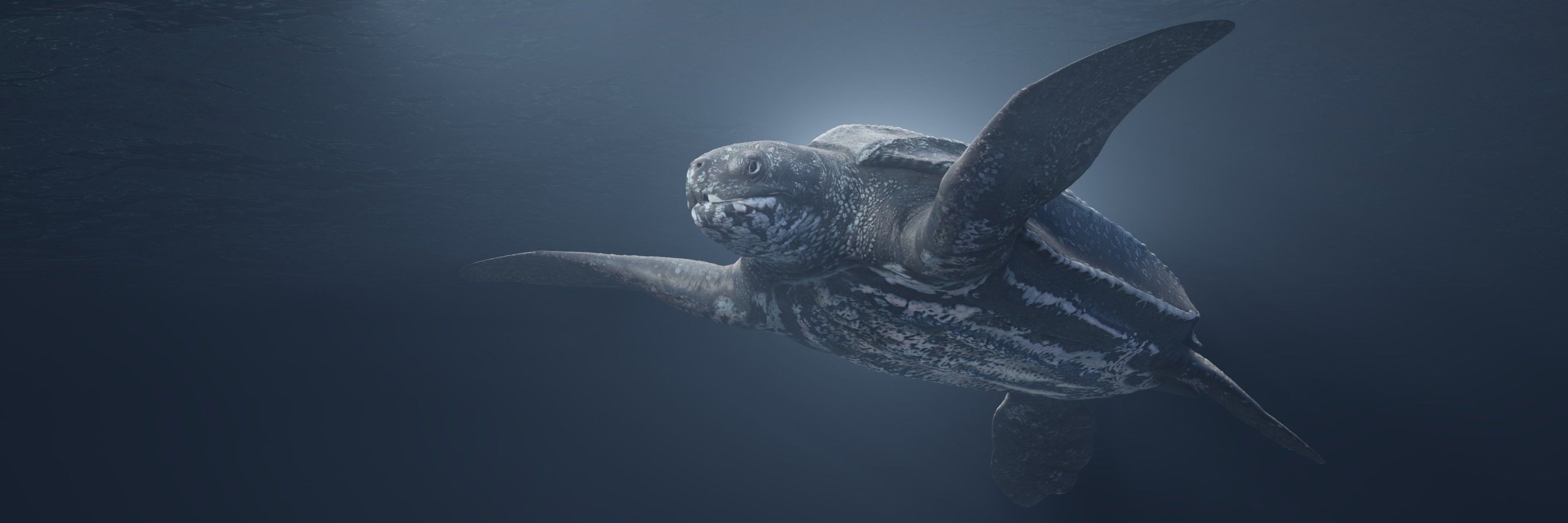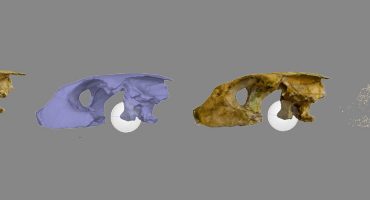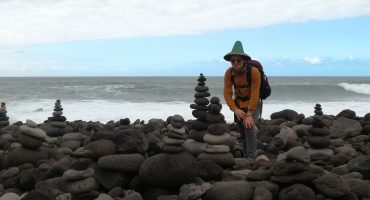What is the Digital Life Project?
In order to understand population structure, the study of body condition, or animal “health” (e.g., animal mass relative to length), is essential. While most humans in developed countries are interested in losing weight, for wild animals, their main goal is typically to avoid losing excessive weight. Knowledge on body condition can be used to support animal science education, research and animal conservation. However, there are logistical barriers to conducting research on live animals, especially for elusive megafauna such as sea turtles. The Digital Life Project allows scientists to study body condition by creating “animal avatars” of live animals, and then providing those 3D models to the general public for free research, artistic, and educational applications.
The Digital Life Project, founded in 2016, produces accurate digital three-dimensional (3D) models of animals for use as scientific tools to support education, research, and conservation initiatives worldwide. Today, 95 mesh and animated models are freely available to download for non-profit use, and additional projects are in varying stages of production. Because these models’ body proportions accurately reflect living animals, they can be used as a digital substitute for studying the species in real life. By providing this resource, we lessen the need for hands-on animal research, protecting the animals themselves, as well as their habitats. To date, we have had over 125,000 downloads, and over 600,000 views of our models.
The first step in most of our projects is using images or other data (e.g., CT Scans) to recreate the accurate body shape and color of the animal. Non-invasive techniques such as photography, videography, and photogrammetry, often undertaken with elaborate camera arrangements, are used to collect these data. We then use Blender and other software to reconstruct these animals in 3D. Some models are based on one individual, and some are “composite” animals that represent a certain age/sex group. We work closely with scientists and non-profit organizations to ensure that these models are as accurate as possible.
While model subjects range from small inanimate objects to massive mammals, we have focused on endangered species such as sea turtles, sharks and marine mammals over the past few years. This is because these animals are elusive, and are underrepresented in natural history collections. Our goal is to continue transforming these species into open-access digital models in order to eliminate barriers to research and education.
“Mac”: The leatherback project
 “Mac,” the adult female leatherback sea turtle that we recreated. Photo courtesy of the Loggerhead Marinelife Center.
“Mac,” the adult female leatherback sea turtle that we recreated. Photo courtesy of the Loggerhead Marinelife Center.Digital Life’s most recent model features an adult female leatherback sea turtle from Florida named “Mac.” We worked in partnership with non-profit Upwell, who provided funding for the project. We also worked alongside the Loggerhead Marinelife Center (LMC).
Process
Instead of using our typical photogrammetry approach, Mac’s likeness was recreated primarily from photos and videos of the live turtle taken by the Loggerhead Marinelife Center. Most female leatherbacks arrive on beaches at night to nest, and the area around Juno, Florida is a key nesting site for these open-ocean travelers. However, we were fortunate that Mac remained on the beach after the sun rose, which allowed LMC to obtain high-quality photos of her as part of their normal research process.
Once obtained, digital artist Johnson Martin aligned these photos and videos using standard photogrammetric techniques. He then used the data to create the underlying shape of Mac’s body, namely the 3D mesh model, which represents the underlying foundation for the more complex, animated and colored 3D model. Reconstructing the underside was a bit more tricky, as relatively little data was available on the underside of Mac. We used other reference photos from similarly sized leatherback sea turtles to reconstruct her underside. Then, Johnson sculpted the model to define her features. To do so, he used 3D brushes and height maps projected onto the mesh. This detail was then “baked” down to image textures. Seemingly all at once, this digital version of Mac had become a spitting image of the real turtle!
To make digital Mac’s carapace and skin look authentic, Martin projected photos of Mac onto the model, then used painting and texture cloning tools to match up the details. By using this method instead of texture generation or AI, he ensured the model is as true-to-life as possible. The final model was calibrated to actual measurements of the turtle taken by the LMC during nesting.
To rig and animate the model, Martin used Blender’s animation tools. He bound the rig to the mesh by weighting different “bones” to specific areas of the mesh, based on the mechanics of leatherback turtle movement. Their exact placement was determined by using videos of real swimming turtles.
Uses
Working with leatherbacks in their natural habitat is difficult. Thus, an anatomically accurate digital version is highly useful in several ways.
- Education: Because our models are free, all educational institutions can use them to teach a variety of important topics in animal science: anatomy, morphology and movement, among other possibilities. Previously, this information was only in textbooks or scientific papers; now, educators have access to an interactive model which can open up new avenues for teaching.
- Research: This model can also be used by researchers to understand leatherback body condition, anatomy, morphology and movement. It can be used to answer more complex questions, too, such as how mass, volume and dimensions are related to leatherback body condition—metrics that are traditionally measured by working with a live turtle.
- Conservation: Since we provide dimensions with the model, it can be used to study leatherback body condition. Therefore, we can use the model as a baseline to differentiate between a healthy and unhealthy sea turtle, and better understand how they interact with their environment.
 Snout of large leatherback turtle. Credit: NOAA Ship DAVID STARR JORDAN Collection; Commander John Herring, NOAA Corps
Snout of large leatherback turtle. Credit: NOAA Ship DAVID STARR JORDAN Collection; Commander John Herring, NOAA CorpsSignificance
Leatherback sea turtle populations have been declining continuously over the past half-century due to human-borne threats, resulting in some populations (e.g., East Indian, IUCN.org) being listed as “Critically endangered” by the International Union for Conservation of Nature (IUCN). Using this first-ever digital model of an adult female leatherback, researchers and educators can study Leatherback morphology, movement patterns, energetics and body condition in new ways. Ideally, with more data, such as more 3D models, scientists can then study variation in body shape and condition among populations. Additionally, if we can help provide educators with new tools, we can continue to help raise awareness of this species.
Future directions
With many species facing severe threats, the urgency for documenting the “digital heritage” of species is growing. Thus, our ultimate goal is to continue translating information from live animals into open-access, permanent 3D online data. Multiple models are close to release. We’ve certainly achieved our original goal of extending our process to a wider group of organisms, but we still have a great deal of work ahead of us to create a comprehensive library of life.
If you are interested in learning more about Digital Life, our partners, and how our work is changing science, click the link below to access our Sketchfab page, social media, and website:






Hello. The endangered species digitization project is wonderful, and I have just used this and two more of its models (loggerhead turtle and juvenile leatherback turtle) in an educational animation that has its first part posted on instagram, on the blog of my character Tupinanquim, the urban indigenous boy!
https://www.instagram.com/p/Ctuz2GRvhLu/
I chose these species because they also occur on the Brazilian coast, where they are protected by Projeto Tamar
https://www.instagram.com/p/Ctuz2GRvhLu/
Thank you very much for sharing the models. The most complete credits, with all the details (the names that appear in your description) will be given when I publish the extended version, probably on youtube.